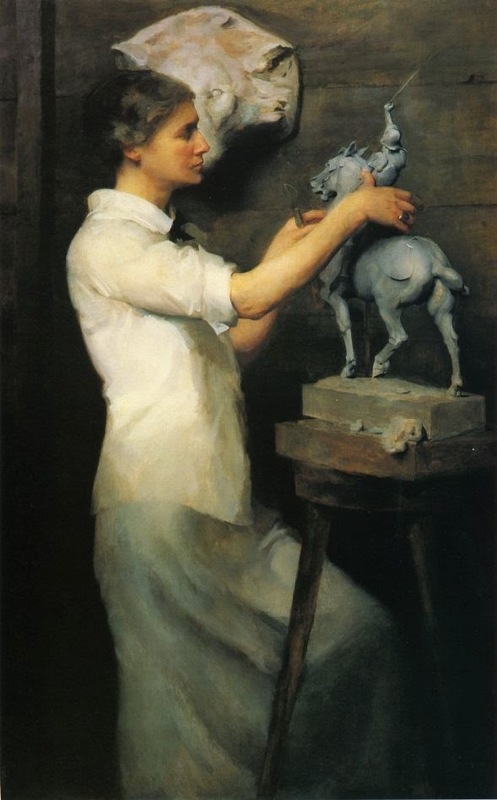Anna Hyatt
Early Years
Anna Vaughn Hyatt was born into a family immersed in art and scholarship. Her father, Alpheus Hyatt, was a Harvard graduate and well-known paleontologist and zoologist. He had a long and distinguished career, teaching at several institutions including MIT and Boston University. In 1867 Hyatt and a colleague founded the Journal American Naturalist. The journal is still published today. Anna’s mother, Aduella Beebe, was an amateur landscape architect. Her older sister, Harriet Hyatt, studied sculpture. It is no wonder that Anna developed an early love of animals and art.
Studying in New York
Anna first studied art with noted sculptor Henry Hudson Kitson in Boston. Her first exhibition at the Boston Art Club in 1900 featured a collection of forty animals. Hyatt later studied with Hermon MacNeil and Gutzon Borglum (best known for his work on Mount Rushmore).
Her skill in depicting animals was appreciated by many collectors. She discovered that her small statues cast in bronze would bring up to $335 each (around $10,000 today), so she was able to support herself while continuing her studies.
She shared studio space in New York with another young artist, Abastenia St. Leger Eberle. The two collaborated on a sculpture Men and Bull which won a bronze medal at the St. Louis World’s Fair in 1904. The two young women worked together for about two years and each became a noted sculptor. Eberle’s work focused on small pieces, often providing social commentary on the life of the underprivileged in New York City. Anna chose work on large scale animal sculptures, with a special emphasis on horses.
By 1907, she felt ready for this next chapter of her life and went to Europe to continue her education through independent study and work. She visited France and Italy, spending time studying art and applying what she learned to her artistic endeavors.
"One ought to be perfectly independent in one’s work and above outside influence…before going abroad."
— Anna Vaughn Hyatt H1

